Table of Contents
Best Fabrics for Sensitive Skin: How Clothing Choices Impact the Skin Barrier
This page may contain affiliate links. We may earn a commission on purchases, at no additional cost to you. Learn more →
You're not alone if your clothes feel like sandpaper against your skin, or if that "soft" polyester shirt leaves you scratching all day. The burning, stinging sensation when fabric touches sensitive areas isn't in your head—it's a real condition affecting millions of people worldwide.
Recent studies reveal that textile dermatitis is far more common than most realize: up to 28.5% of clothing industry workers develop contact dermatitis from fabric exposure, with symptoms ranging from sharp stinging and burning sensations to painful blisters and constant itching. Research shows that 80% of contact dermatitis cases are triggered by irritants rather than allergies, meaning the chemicals, dyes, and finishes in your everyday clothes could be the culprit behind your skin misery.
Your "breathable" synthetic activewear, the wrinkle-free work shirt, and even your favorite cotton blend could be loaded with formaldehyde resins, disperse dyes, and antimicrobial finishes that migrate onto your skin with every drop of sweat. These chemicals don't just sit on the surface—they penetrate your skin barrier, especially when you're warm, sweaty, or wearing tight-fitting clothes, triggering inflammation that can last for days or weeks.
If you've been struggling with unexplained rashes, persistent itching, or skin that feels like it's on fire after wearing certain clothes, this isn't something you have to live with. Understanding which fabrics and chemical treatments to avoid—and which certified, gentle alternatives actually work—can transform your daily comfort and skin health.

photo source: Unsplash
KEY TAKEAWAYS
-
Natural fibers are your safest bet. Dermatologists consistently recommend 100% cotton as the top choice for sensitive, eczema-prone skin because it's soft, breathable, and absorbent. Other plant-based fabrics like bamboo and linen, plus silk, help regulate moisture and temperature to prevent irritation.
-
Avoid the troublemakers. Coarse wool and synthetic materials like polyester and nylon trap heat and have scratchy fibers that trigger itching and rashes. Even "wrinkle-free" fabrics may contain formaldehyde resin that aggravates skin allergies.
-
Some fabrics surprise you. Ultra-fine merino wool under 17.5 microns breaks all the rules—research shows it can actually improve eczema symptoms, though results vary by individual. And that "natural" bamboo fabric? It's usually chemically processed, so look for OEKO-TEX or GOTS certification.
-
Your bedding matters as much as your clothes. Since you spend a third of your day in bed, hypoallergenic bedding using cotton or silk sheets helps reduce nighttime irritation. New options like bamboo or TENCEL™ sheets offer a silky, cool feel ideal for sensitive skin.
-
How you care for clothes matters. Use gentle, fragrance-free detergents and rinse thoroughly to remove chemical residues. Washing new clothes before wearing removes manufacturing chemicals and dyes that could cause contact dermatitis.
Why Your Clothes Might Be Hurting You
Studies show that 60-70% of women and 50-60% of men report having some degree of sensitive skin. That's not a small niche—it's mainstream. Your skin acts as a protective barrier, but when it's compromised by conditions like eczema or simply genetics, even small amounts of textile chemicals can penetrate and trigger reactions.
Think about it: disperse dyes are used in 60-70% of synthetic fabric coloring, and these small molecules easily transfer from fabric to skin, especially with heat and moisture. That polyester workout top you love? It's probably loaded with chemicals that migrate onto your skin every time you break a sweat.
Understanding Sensitive Skin, Textile and Atopic Dermatitis
Studies indicate that 60-70% of women and 50-60% of men report having some degree of sensitive skin, making this a mainstream rather than niche concern. The official medical definition describes sensitive skin as "a syndrome defined by the occurrence of unpleasant sensations (stinging, burning, pain, pruritus, and tingling sensations) in response to stimuli that normally should not provoke such sensations."
The Reality of Textile Dermatitis
Textile dermatitis affects up to 28.5% of people who work closely with fabrics, but it's not limited to industry workers. Anyone can develop reactions to:
-
Chemical finishes (formaldehyde resins, antimicrobials, stain repellents)
-
Synthetic dyes (especially disperse dyes used on polyester)
-
Fabric additives (softeners, flame retardants, optical brighteners)
-
Processing residues (bleaches, detergents, heavy metals)
How Your Skin Barrier Works
Your skin acts as a protective barrier, but when it's compromised by:
-
Filaggrin deficiency (genetic variants affecting 20-30% of people with eczema)
-
Elevated transepidermal water loss (TEWL)
-
Disrupted pH balance
-
Damaged lipid layer
...even small amounts of textile chemicals can penetrate and trigger reactions.
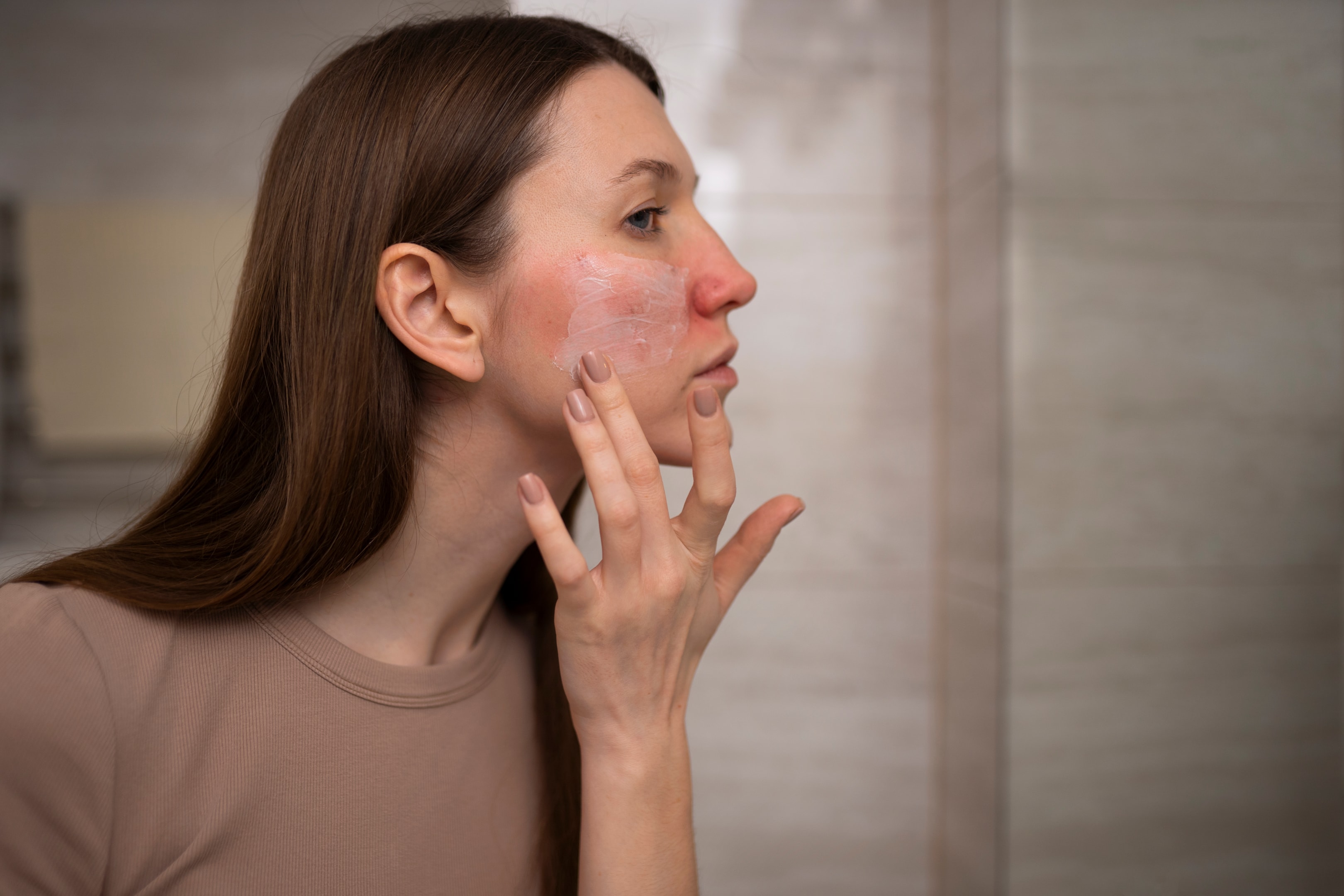
Atopic Dermatitis and Its Effects
Atopic dermatitis, also known as atopic eczema, is a widespread skin condition impacting all generations worldwide. It occurs when the skin barrier is weakened due to irritants, resulting in dry and irritated skin. Next thing you know, there are red itchy patches on different parts of the body that flare up in response to triggers like friction, heat, moisture or chemicals.
What happens?
Excessive heat and sweat increase water loss from the epidermis, leading to dry skin and making the outer layer more susceptible to damage. On the other hand, friction physically damages the stratum corneum, which is the protective layer, allowing irritants and allergens to access the epidermis more easily.
That’s the moment when you start feeling stinging, itching, or burning sensations, and notice redness or dryness.
This skin status can lead to colonization by bacteria such as Staphylococcus aureus and other microorganisms, resulting in further complications.
Why fabric choice matters for sensitive skin
When you live with skin sensitivities—from atopic dermatitis to contact dermatitis—your skin barrier needs a break. Fabrics that rub, trap heat, or hold sweat close to your body can aggravate skin irritation and trigger flare ups. As Mayo Clinic notes indry‑skin care guidance, soft fabrics made of natural fibers are gentler choices than rough or scratchy ones
The qualities of skin‑friendly fabrics
Look for skin friendly properties like:
-
Smooth texture to avoid friction—think cotton weaves, close fitting silk garments, and finely spun knits.
-
Air circulation and highly breathable construction to keep skin cool and your skin dry.
-
Moisture wicking properties or strong absorbency to wick moisture from sweat (key for existing skin conditions like eczema).
-
No harsh chemicals (choose OEKO‑TEX or GOTS‑certified pieces when possible).
-
Temperature regulation helps avoid extremes. Wool and silk can regulate temperature—warm when cold, cool when hot—which helps avoid the triggers that come from overheating or getting too cold.
Fabrics & Features to Avoid (and Why)
Some fabrics, especially synthetic fabrics, can lead to irritation and discomfort. Synthetic fibers are designed to be elastic and resist water, but they often capture heat and moisture, leading to flare-ups and complications we mentioned above. However, the physical properties of synthetics are only part of the story—these materials frequently carry chemical finishes and dyes that can migrate to skin under heat and sweat conditions, potentially triggering contact dermatitis.
Additionally, common textile treatments like formaldehyde-based wrinkle-resistant finishes, antimicrobial agents, and disperse dyes used in synthetic fabrics have been linked to allergic reactions and skin barrier disruption, effects that standard eczema guidance often overlooks in favor of focusing solely on fiber breathability and friction.
So here´s what to avoid:
-
Synthetic fabrics like polyester, nylon, acrylic, and spandex trap heat and moisture, creating ideal conditions for skin irritation. Disperse dyes easily migrate to skin under normal wearing conditions. The American Academy of Dermatology explicitly says to avoid polyester for eczema-prone individuals.
-
Coarse wool (over 25 microns) causes physical irritation from thick fibers poking skin. It's not actually allergenic for most people—it's mechanical irritation.
-
"Wrinkle-free" or "stain-resistant" fabrics often contain formaldehyde-based resins or PFAS-based stain repellents. New research confirms that 15 out of 17 commonly used PFAS can be absorbed through human skin.
-
Tags, seams, and labels irritate by friction. Remove scratchy tags and avoid clothing with exposed abrasive seams.
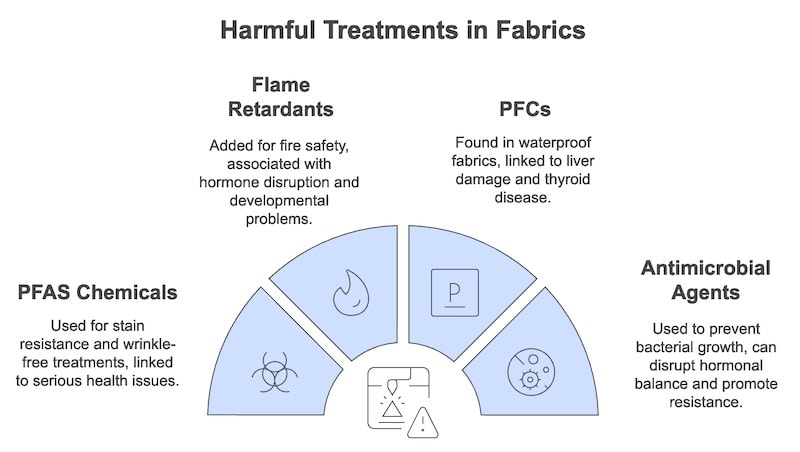
The Science Behind Fabric-Related Skin Irritation
You know what it looks like on the surface, but beneath, things are happening at the cellular level. Many people with sensitive skin and eczema experience:
Filaggrin deficiency
Filaggrin is a protein found on the epidermis, providing structural support and protection. It also facilitates retention of moisture because once it breaks down, it produces natural moisturizing factors.
A major study found that certain genetic changes in the filaggrin gene make the epidermis barrier weaker, which increases the risk of atopic dermatitis and other conditions. When filaggrin is low, the epidermis loses moisture and becomes more sensitive to irritants and allergens. This shows how important filaggrin is for keeping skin healthy and protected.
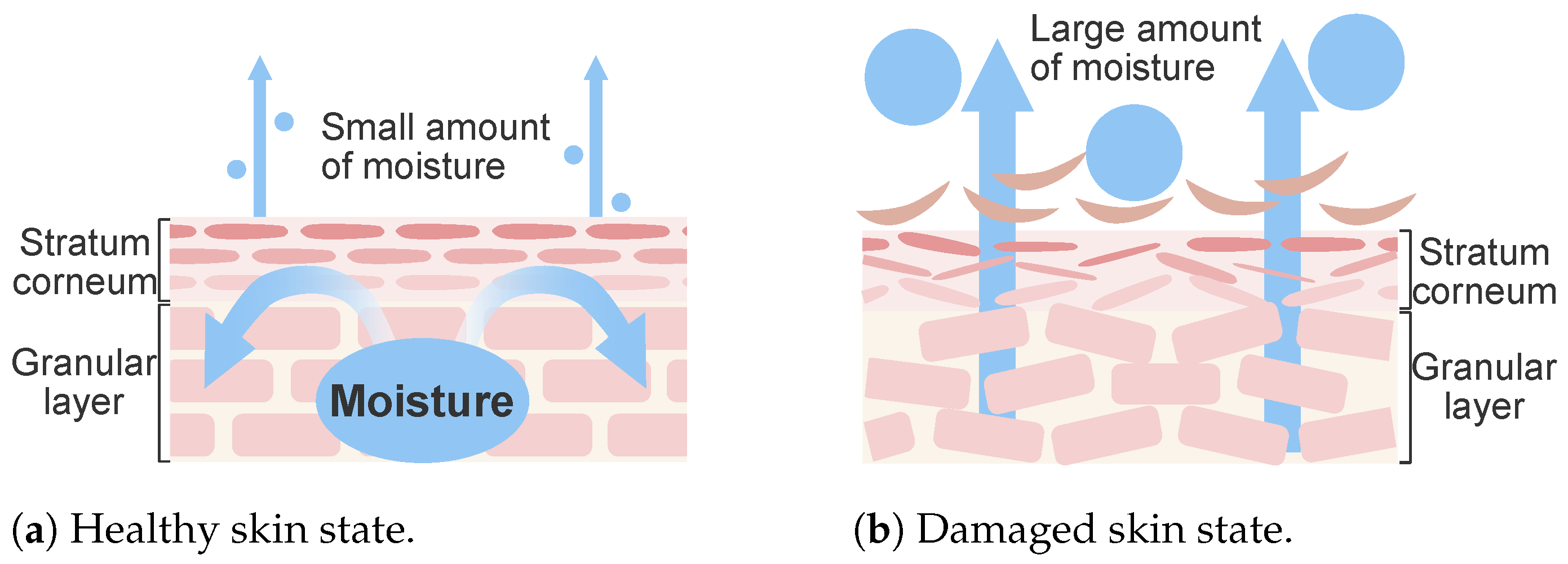
Source: Matsui et al., 2024, MDPI Electronics I The stratum corneum in healthy and damaged skin status
Transepidermal Water Loss (TEWL)
TEWL is just as it sounds, losing body water through the skin surface. It is a great indicator of skin barrier function; therefore, it can tell you a lot about dermal health.
A very interesting study observed six healthy females sitting for 45 minutes on a spacer fabric and on a cotton fabric. Among other metrics, they measured TEWL in the gluteal areas. Results?
Wearing spacer fabrics caused a two times higher increase of TEWL compared to cotton, showing how fabric choice in regular clothes can directly affect skin hydration.
Electrostatic Charge
Irritating materials can build up electrostatic charge, amplifying the sensation of itching in already inflamed epidermis. Other than that, this intensifies discomfort, leading to a bad mood and frustration.
Disrupted Lipid Layer Composition
Stratum corneum, or the outer layer of the skin, consists of lipids like ceramides, cholesterol, and fatty acids. Certain fabrics can trap heat and sweat, leading to disruption of this lipid layer.
The National Eczema Association states that this different composition can contribute to keeping skin dry, irritation, and outbreaks.
Disrupted pH Balance of Skin
Our skin is slightly acidic, and that is a good thing because it supports its microbiota, helps with getting optimal hydration, and keeps harmful bacteria away. However, some harsh chemicals present in clothes or detergents can raise pH and encourage irritation or microbial growth.
Highly breathable fabrics with moisture-wicking properties play a big role in air circulation and maintaining optimal body temperature. These materials draw sweat away from the skin and allow it to evaporate quickly, keeping the skin cool and dry.
With that said, let’s explore clothes that will help your sensitive skin stay healthy.
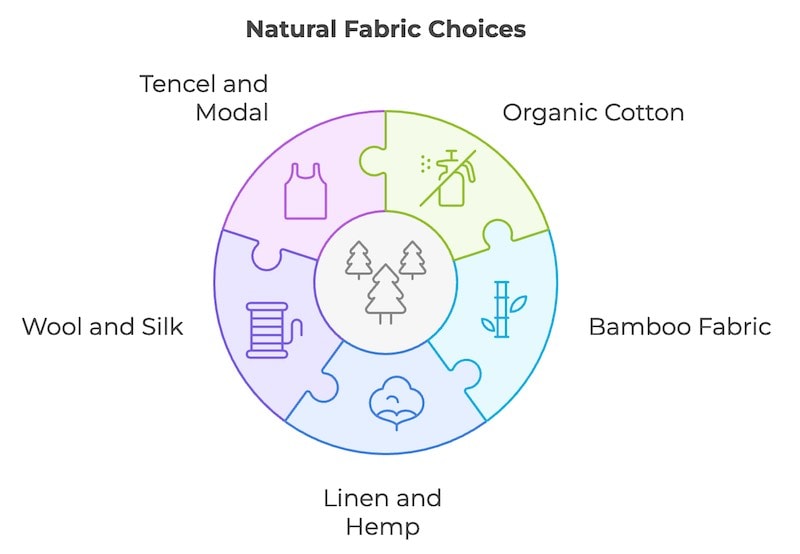
The 7 Best Fabrics for Sensitive Skin
Not all fabrics work the same way. Here are seven materials that dermatologists and textile experts consistently recommend, each with unique benefits that can help you stay comfortable.
1. Organic Cotton (GOTS Certified)
Cotton—preferably 100% and ideally organic—is often called the "safest" fabric for sensitive skin. It's naturally soft and breathable, allowing air to circulate so your skin stays cool. Cotton fibers absorb excess moisture and help keep skin dry, which is crucial in preventing irritation.
True allergies to cotton are extremely rare. The National Eczema Society confirms that cotton allows the skin to breathe. But here's what matters: organic or OEKO-TEX cotton lacks allergenic dyes and formaldehyde found in regular textiles. Conventional cotton uses 25% of global pesticides on just 2.4% of farmland, and those chemical residues can persist through processing.
A study published in Sports Medicine highlighted that cotton shines in regulating temperature and providing comfort during sports activities. This makes organic cotton the number one choice among sports adventurers.
One thing to watch: "cotton blends" often contain polyester, which negates the benefits. Stick with 100% cotton when possible.
Best for: Daily wear, underwear, sleepwear, baby clothes, anyone with eczema or chemical sensitivities.
2. Superfine Merino Wool (Under 17.5 Microns)
This one surprises people. Traditional wool is usually off-limits for sensitive skin—and for good reason. Ordinary wool fibers are thick (over 30 microns) and feel scratchy, which can irritate or even cause a rash.
But superfine merino wool is different. It comes from Merino sheep and is extremely fine (often less than 18 microns). These fibers bend against the skin rather than poking it, so many with sensitive skin—even eczema—find merino clothing comfortable.
Here's the breakthrough: a 2019 clinical trial published in the British Journal of Dermatology showed children and adults with eczema who wore superfine merino wool actually saw improvements in their condition compared to those wearing standard clothing. A 2020 review concluded ultra-fine merino is least likely to cause itching.
Of course, tolerance varies. If you try merino—like a base-layer shirt or socks—monitor your skin's reaction. Some individuals still can't handle even the finest wool. But don't discount it entirely. Its ability to regulate temperature and keep skin dry is hard to match.
Best for: Base layers, winter clothing, activewear, anyone with eczema or temperature regulation issues.
3. Mulberry Silk (Sericin-Free, OEKO-TEX Certified)
Silk is a luxury fabric that happens to be excellent for sensitive skin. Its fibers are super smooth—silk is made of protein fibers with a fine, polished surface—so it glides over the skin without friction. This reduces irritation, especially for those with eczema or dry, flaky skin that catches on rough materials.
Silk is thermoregulating. It helps keep you warm when it's cool and releases heat when you're warm, which prevents overheating—a known trigger for itching. Silk naturally resists dust mites, mold, and certain allergens, which is why silk pillowcases are often recommended for facial dermatitis or acne.
The downside? Silk requires delicate care—it's not as easy to wash and can be stained by ointments or heavy moisturizers. If you're using thick eczema creams, put a layer of cotton beneath silk to avoid ruining it.
Best for: Sleepwear, pillowcases, undergarments, post-surgical clothing, severe skin sensitivity.
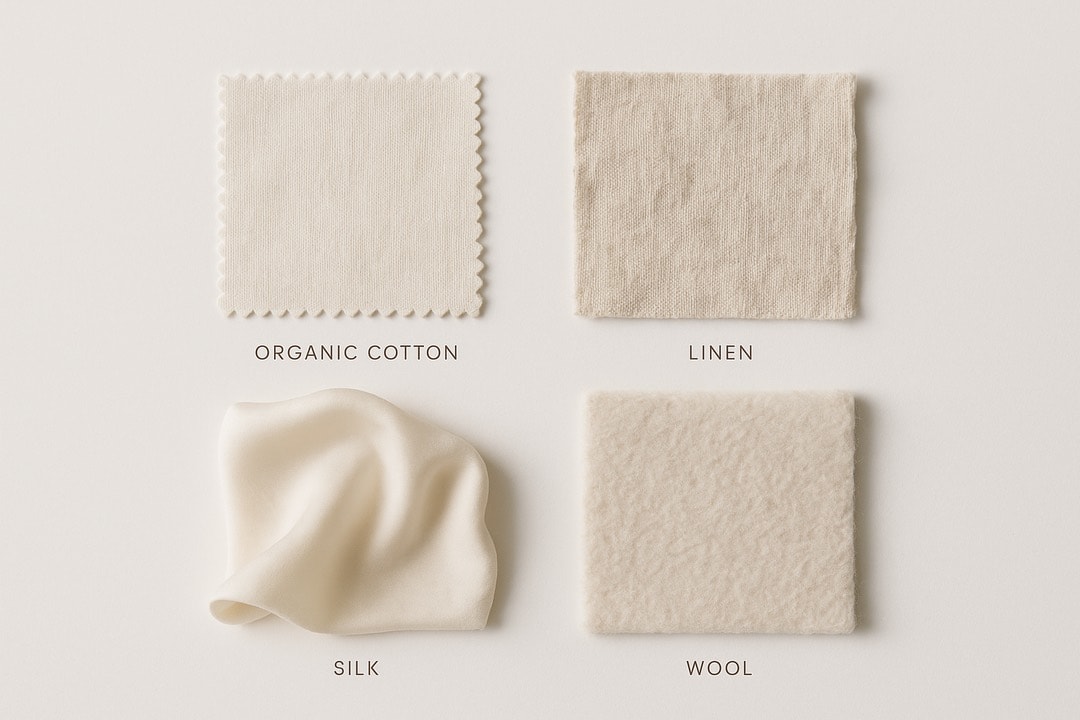
4. TENCEL™ Lyocell (Certified)
TENCEL (lyocell) is a plant-based fiber made from wood pulp with exceptionally smooth fibers—even smoother than cotton. This means it causes minimal friction on the skin, which helps avoid irritation and the "itch-scratch" cycle for eczema.
Lyocell is very breathable and actively wicks moisture away. It actually absorbs moisture 50% more effectively than cotton, keeping skin drier—crucial for preventing chafing and heat rash. The closed-loop production process recycles 99.8% of solvents, minimizing chemical residues. That's good news for sensitive skin, since residual chemicals like solvents or dyes are minimized.
Modal, made from beech tree pulp, is a sister fiber that's also very soft and often blended with cotton in underwear and tees for added softness.
Best for: Underwear, activewear, sleepwear, hot climates, excessive sweating.
5. Organic Linen and Hemp
Linen is known for exceptional breathability. Its loosely woven flax fibers allow plenty of airflow, keeping skin cool and dry in hot weather. It's highly absorbent and naturally antibacterial and hypoallergenic—flax inhibits bacteria and doesn't harbor dust mites easily.
Pure linen can feel stiff or slightly rough initially, which might worry you. But it softens dramatically with each wash. Over time, a well-broken-in linen shirt can feel nearly as soft as cotton while retaining its strength.
Hemp fabric is similar. Hemp fibers are naturally coarse in raw form, but once processed and woven, hemp fabric becomes soft and smooth—and it gets softer with each wash and wear. It's breathable, wicks moisture well, and is antimicrobial, resisting mold and mildew growth. Because hemp is grown without pesticides and needs far less water than cotton, you won't have chemical residues on your clothes.
Best for: Summer clothing, loose-fitting garments, hot climates, natural fiber preference.
6. Bamboo Fabric (With Important Caveats)
Let's be honest: most "bamboo" clothing is actually bamboo viscose—a chemically processed fiber made by dissolving bamboo pulp with sodium hydroxide and carbon disulfide. It's not the natural wonder some brands claim.
That said, bamboo fabric can be skin-friendly if properly certified. Bamboo textiles are loved for their silky softness—they often feel smoother than cotton. They're highly breathable and more absorbent than cotton, which helps keep sweaty or damp skin drier. Bamboo is also naturally antibacterial, resisting odor and bacterial growth.
The key: only choose OEKO-TEX or GOTS certified bamboo with transparent production processes. Bamboo keeps you cool in summer and warm in winter, offering temperature regulation.
Better alternative: Choose TENCEL™ lyocell over bamboo viscose for similar properties with cleaner production.
Best for: Summer clothing if certified properly.
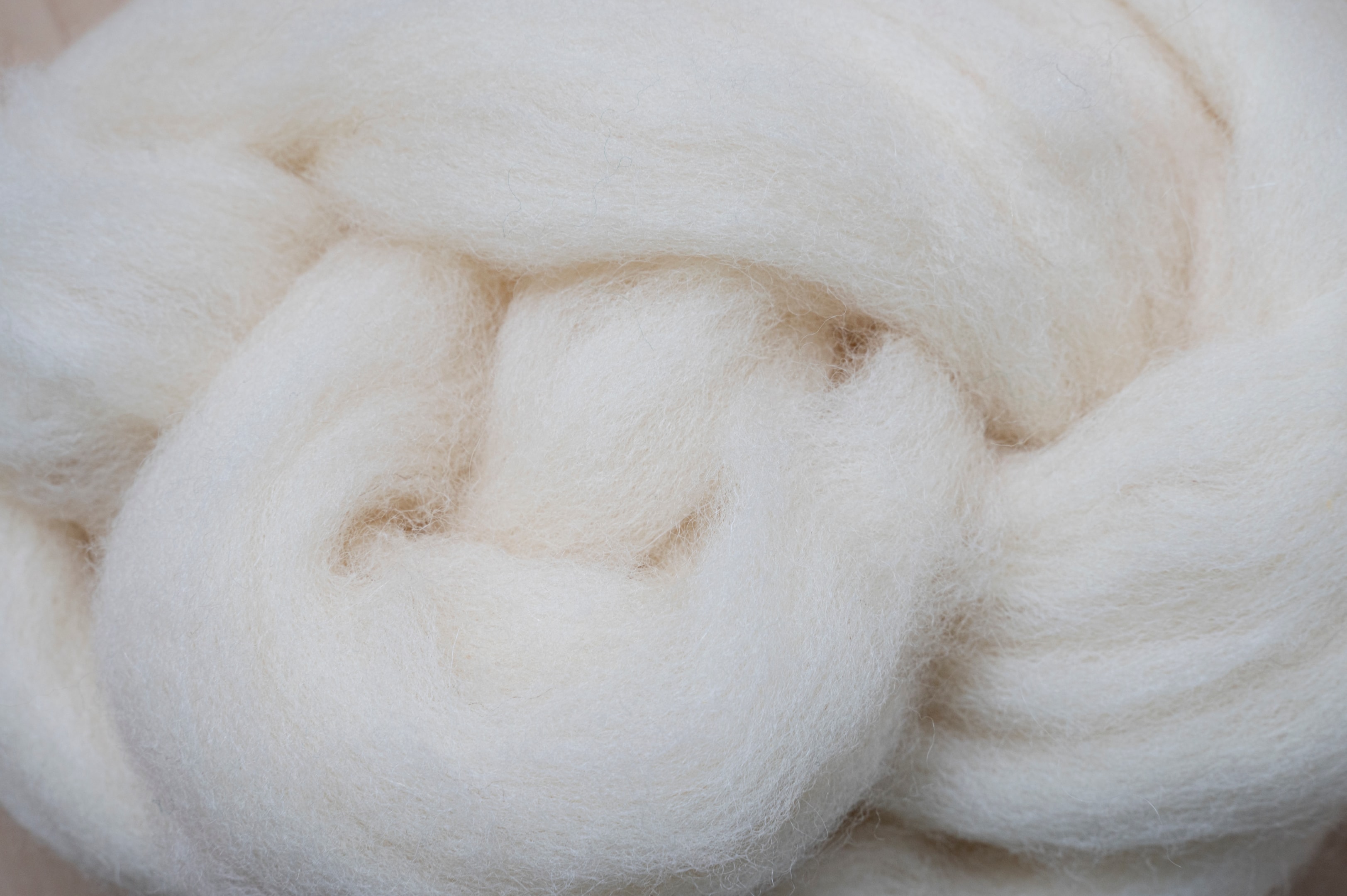
How to Care for Your Sensitive-Skin Fabrics
Even the best fabric can irritate if not cared for correctly.
-
Use gentle detergents. Fragrance-free, dye-free detergents are essential. The American Academy of Dermatology says residues can irritate. Avoid fabric softeners and dryer sheets—they often have fragrances and waxy residues.
-
Double rinse. Use an extra rinse cycle especially for eczema. This removes any leftover soap which could cause itch.
-
Wash new clothes before wearing. Always wash new garments at least once (maybe twice) before first wear. This removes manufacturing chemicals—sizing and dyes.
-
Consider water temperature. For bedding, the National Eczema Society suggests washing at 60°C (140°F) to kill dust mites if dust mite allergy is a factor in eczema.
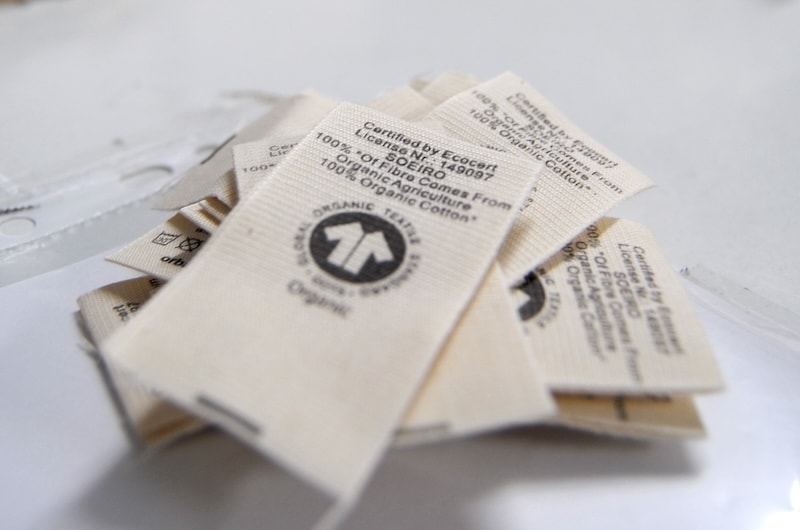
Practical Tips for Choosing the Right Fabrics foHow to Care for Your Sensitive -Skin Fabrics
-
Choose loose-fitting clothes whenever possible. They allow air circulation, maintaining normal body temperature, which reduces the chances of irritation.
-
Opt for clothing made from natural fibers, such as organic cotton. This is especially important if you have eczema or similar skin conditions. Cotton is highly breathable, keeping your skin cool.
-
Check for certifications like GOTS, OEKO-TEX. These assure you of the product's quality and ensure it is free from harmful substances.
-
For colder climates, close-fitting silk garments can be a good choice. Silk helps you stay warm while still maintaining temperature without overheating.
-
Avoid problematic materials such as synthetics and wool. They trap heat, cascading a series of epidermis reactions (bad ones).
-
Look for comfy fabrics that wick moisture away. Materials with high breathable qualities are efficient in neutralizing sweat, so you feel pleasant throughout the day.
-
Think about design details on clothes. Since some parts of clothing irritate sensitive skin more than others, consider buying tagless clothes or those with flat seams. It really makes a difference.
-
Skip anything tagged ‘’non-iron’’ or ‘’dirt-repellent. Even though it sounds great, chances are, it’s been treated with chemicals your body doesn’t need.
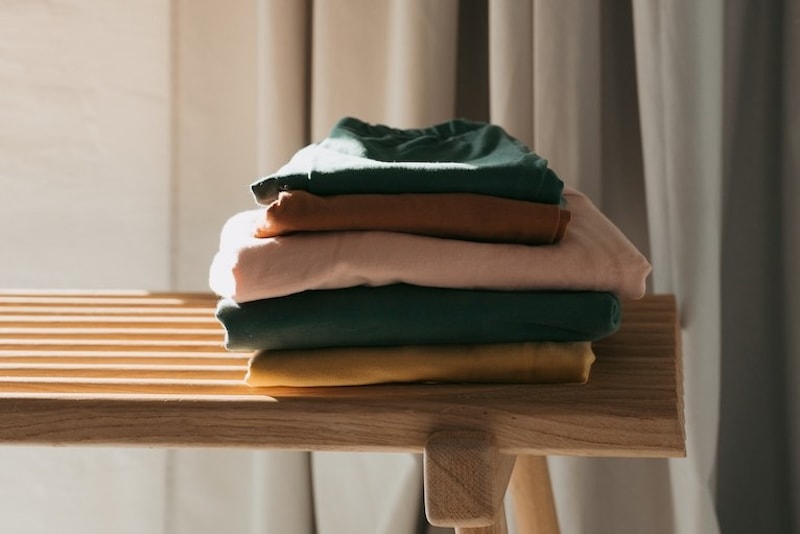
A Gentle Note
You deserve clothes that feel like a hug, not a hurdle. Start small: swap just one irritating top for an organic cotton tee, or one pillowcase for silk. See how your skin responds. Some days it’s science; some days it’s just listening to what feels good. Either way, now you know how to choose the right fabric—and that choice really can make all the difference.
FAQ to Best Fabrics for Sensitive Skin
What fabrics should you avoid with eczema?
Avoid traditional wool and synthetic fabrics like polyester and nylon because they can trap heat and sweat and irritate already inflamed skin.
Is Silk or Cotton Better for Sensitive Skin?
Both silk and cotton are good materials made out of natural fibers with moisture-wicking properties. If you want an everyday fabric that supports sensitive skin while keeping environmental impact low, you should go with 100% organic cotton. Consinder GOTS certified organic cotton, since it´s free of pesticides and harmful checmicals.
Which Fabric is Good for Itchy Skin?
The best materials for this state are breathable fabrics with ultra-fine fibers, making it an eco-friendly option. Bamboo fabric is popular because it’s gentle, eco-friendly, and naturally helps reduce irritation caused by rougher textures. On the other hand, cotton and silk are also reliable, while merino wool can surprise many people with its soft texture.
What Clothing is Best for Winter if You Have eczema?
Winter clothing can be tricky because cold air makes skin dry, but heavy layers of fabric may capture heat and sweat, causing problems. To balance this, dermatologists recommend natural fabrics like organic cotton for base layers and merino wool for outerwear, since both have moisture-wicking properties and reduce irritation caused by overheating.
Should I Wash New Clothes Before Wearing Them if I Have Sensitive Skin?
Yes, you should wash new garments before wearing them. They could contain harsh chemicals or dyes, and washing them helps remove these irritants. Consinder bying GOTS and OEKO certied clothing, that are free of harmful checmicals.
Are Synthetic Fabrics Always Bad for Eczema?
Most research points in that direction, so it is safer to go with materials with natural fibers and smooth texture, instead of synthetic fibers.
What Material Does Not Itch?
According to The National Eczema Society, materials such as bamboo fabric, silk, and cotton are less likely to cause itching. These fabrics are soft, breathable, and gentle on skin.













